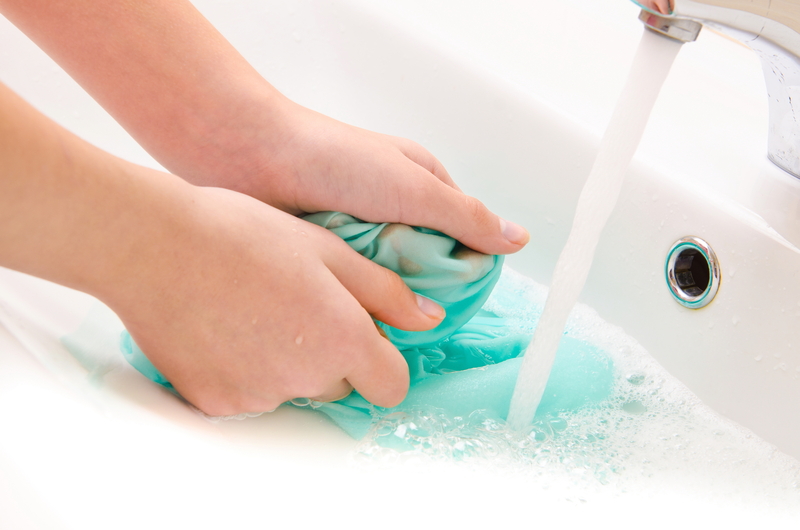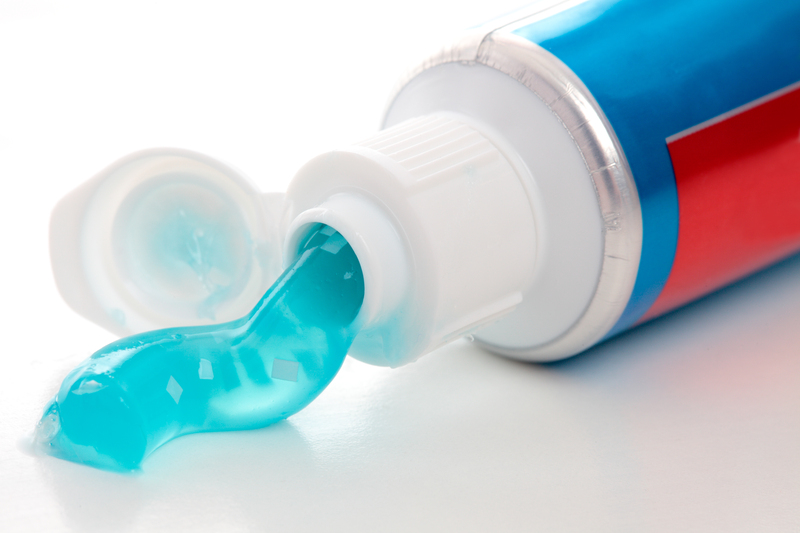The Ultimate Guide to Freshening Up Your Curtains
Posted on 22/05/2025
The Ultimate Guide to Freshening Up Your Curtains
Curtains do so much more than just block out sunlight or add privacy--they are a crucial part of your home's aesthetic and play a fundamental role in maintaining a clean, inviting atmosphere. Over time, curtains accumulate dust, odors, and stains, making your space look and feel less than fresh. Whether you want to spruce up heavy drapes or lightweight sheers, this concise guide will show you how to freshen up your curtains effectively.
Why Freshening Up Your Curtains Matters
Many homeowners focus on vacuuming floors and dusting shelves, but curtain maintenance is just as vital. Dirty curtains can harbor allergens and odors, reducing indoor air quality and abundance of household freshness. Regularly revitalizing your curtains ensures both aesthetic appeal and a healthier environment.
- Improves air quality: Removing dust and allergens keeps your indoor air cleaner.
- Enhances appearance: Fresh curtains instantly brighten any room.
- Extends curtain life: Routine care prevents fabric breakdown and fading.
- Prevents bad odors: Neutralizes and removes stubborn smells from everyday living.

Quick Overview: Methods for Freshening Up Curtains
- Vacuuming to remove surface dust
- Washing or steaming for deep cleaning
- Spot cleaning stains and spills
- Using natural deodorizers
- Preventing future build-up
Step-by-Step Guide to Freshening Curtains
1. Assess the Curtain Fabric
Begin by identifying your curtain material. Whether it's cotton, silk, velvet, polyester, or a blend, each fabric requires a unique approach to cleaning and maintenance. Check the manufacturer's care label--this will determine your options for washing, steaming, or dry-cleaning.
- Natural fibers (cotton, linen): machine washable, but may shrink
- Synthetics (polyester, nylon): typically safe for machine washing
- Delicates (silk, lace): hand-wash or dry-clean only
- Velvet and heavy drapes: often need professional attention
2. Regular Curtain Maintenance
Routine care is key. Here are effective ways to keep your curtains fresh between deep cleans:
- Vacuum Weekly: Use the brush attachment to remove dust and pet hair. Focus on pleats and header areas, as dust tends to accumulate there.
- Shake Out Dust: Take down lighter curtains and shake them outside to expel loose dirt and allergens.
- Brush Off Debris: For heavy or hard-to-remove curtains, use a soft-bristled brush.
3. Deep Cleaning: Washing Curtains
Depending on the fabric and care label, you can typically wash your curtains at home or opt for dry cleaning:
Machine Washing Curtains
- Remove hooks, hardware, and any detachable trims.
- Use a gentle cycle and cold water to avoid shrinking or fading.
- Mild detergent is preferable--avoid bleach unless dealing with stubborn stains on white fabrics.
- After washing, hang curtains to air dry naturally. Avoid direct sunlight to prevent discoloration.
Hand Washing Delicate Fabrics
- Fill a tub with lukewarm water and a few drops of mild detergent.
- Soak the curtains gently and swish without rubbing. Focus on stained areas using your fingers or a soft sponge.
- Rinse thoroughly to ensure all soap residue is removed.
- Gently squeeze out excess water--do not wring or twist!
- Hang the curtains, supporting their weight evenly to prevent stretching.
Dry Cleaning for Heavy or Specialty Curtains
If your curtains are labeled "dry clean only" or have complex linings and trims, it's best to leave the job to professionals. Dry cleaning preserves the fabric's integrity and prevents irreparable damage.
4. Spot Cleaning Stains on Curtains
Even with regular cleaning, stains can happen. For a targeted approach:
- Blot (don't rub) liquid spills with a clean cloth as soon as possible.
- Prepare a gentle solution of water and dish soap. Test on an inconspicuous area first.
- Dab the stained spot with the solution using a microfiber cloth, then blot dry.
- For persistent stains, consider a fabric-safe cleaner or consult a professional.
Tip: Avoid soaking the area to prevent water rings or discoloration.
5. Deodorizing Curtains Naturally
Fresh-smelling curtains make a big difference in the room atmosphere. Here are simple, natural ways to banish curtain odors and leave them smelling wonderful:
- Baking Soda Sprinkle: Lightly dust your curtains with baking soda, let sit for 15-30 minutes, then vacuum up the residue.
- Vinegar Mist: Fill a spray bottle with a half-and-half solution of white vinegar and water, and lightly mist the fabric. The vinegar smell dissipates as it dries, taking other odors with it.
- Scent Boost: Add a few drops of essential oil (like lavender or eucalyptus) to the vinegar mix for a subtle fragrance.
- Sunshine Freshness: Hang curtains outside on a breezy, sunny day--UV rays naturally eliminate smells and kill bacteria.
6. Steaming Curtains for a Refreshed Look
Steaming is one of the fastest ways to refresh your curtains without removing them. This process:
- Removes wrinkles and creases instantly
- Neutralizes odors
- Sanitizes lightly soiled fabrics
Run a handheld garment steamer down the length of your curtains, holding the steamer a few inches from the fabric. Pay extra attention to pleats or folds. For extra freshness, follow up with a quick spritz of your favorite fabric spray.
7. Preventing Buildup and Maintaining Fresh Curtains
Maintaining curtain freshness is far easier and less time-consuming than dealing with years' worth of buildup. For long-lasting results:
- Open windows regularly to keep moisture and odors from settling in.
- Use an air purifier in rooms with heavy drapes--this reduces dust and allergens.
- Implement a no-smoking, no-candle policy near curtains to avoid lingering odors and possible stains.
- Wash or clean tiebacks and trims as they collect debris over time.
Special Care for Unique Curtain Types
Maintaining Blackout Curtains
Blackout curtains have a special lining designed to block light. Never machine-wash these unless the care instructions state it is safe. Instead, vacuum regularly and spot clean only. For deep cleaning, professional services are usually best.
Cleaning Sheer Curtains and Lace Panels
Sheer chiffon, voile, and lace panels are delicate but easy to freshen:
- Wash gently in cold water (by hand or on a delicate machine cycle).
- Avoid the dryer; instead, hang to air dry.
- Use vinegar sprays to keep them smelling clean and fresh.
Care for Velvet and Silk Curtains
Velvet and silk require tender care:
- Velvet: Steam only; avoid water, which can ruin the pile.
- Silk: Dry clean--water can stain and weaken delicate silk fibers.
DIY Curtain Freshening Solutions
If you prefer homemade methods to commercial products, try these safe, effective recipes:
- Lemon Fresh Spray: Mix 1 cup water, a spoonful of baking soda, and juice of one lemon. Spritz lightly onto curtains.
- Natural Fabric Deodorizer: Combine 1 cup water, 2 tbsp vodka, and 10 drops of your favorite essential oil.
- Baking Soda Sachets: Place small pouches filled with baking soda behind curtain panels to absorb odors over time.
Frequently Asked Questions About Freshening Curtains
How often should I clean my curtains?
For best results, vacuum curtains weekly and deep-clean every 3-6 months, depending on room use and exposure to smoke, dust, or pets.
Can I freshen my curtains without taking them down?
Yes! Regular vacuuming, steaming, and natural deodorizers can all be used while curtains hang in place.
What is the best curtain freshening spray?
Commercial sprays work well, but DIY fabric fresheners using water, vinegar, and essential oils offer a chemical-free alternative.
Are air fresheners and perfumes safe?
Be cautious--some air fresheners or perfumes may leave residue or discolor fabric. Choose natural sprays designed specifically for textiles.

Final Tips for a Curtain Refresh
- Rotate curtains between rooms to even out wear and sun exposure.
- Always store clean, dry curtains in cool, dry spaces during seasonal changes.
- For persistent odors (smoke or mildew), combine baking soda treatment with sun exposure for best results.
Conclusion: Enjoy Fresher Curtains Year-Round
A fresh set of curtains uplifts your entire living space. By incorporating these easy routines, homemade solutions, and proper techniques, you ensure every room looks, feels, and smells inviting. Whether you're battling seasonal allergies or simply want a brighter, more cheerful home, regular curtain care is the key. Remember, the ultimate curtain refresh is as much about longevity and health as it is about beauty. Happy cleaning!



